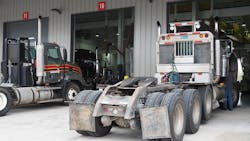Bendix announces educational Tech Tips Series
Bendix announced its Bendix Tech Tips Series to educate customers on use of its various air dryer cartridges.
This expansion stems from customer feedback, testing and increasing aftermarket replacement options.
Bendix director of marketing and customer solutions for air charging, Richard Nagel said the company is stressing the quality of vehicle’s compressed air supply.
“With higher levels of automation come solenoid valves that provide precise control but require cleaner air than traditional manual brake valves,” Nagel said. “Some automated manual transmissions also rely on pneumatic controls, along with emissions controls and other systems that improve driver safety and comfort.”
Factors including age, type, amount of air consumed, duty cycle and operating environment all play a role in how often a cartridge needs to be serviced or replaced. A surplus of moisture or oil mixed with water can speed up the deterioration and require replacement much sooner than normal, Nagel explained.
Typically, Bendix suggests draining the air reservoir to examine for moisture every 25,000 miles, 900 hours, or three months under normal conditions. For medium-usage vehicles, these numbers are 12,000 miles, 450 hours or two months, and for more demanding vehicles, it is 6,000 miles, 300 hours or once a month.
Intervals of replacement also vary depending on the type of cartridge and air usage; standard, medium and high. The company notes that awareness is essential, especially with oil-coalescing cartridges.
“Especially on newer trucks, oil-coalescing filters are protecting components that can carry a significant repair cost,” Nagel said. “So if your truck was originally equipped with an oil-coalescing cartridge, it’s important to replace it with one. And you can always upgrade from a standard cartridge to an oil-coalescing version.”
For those cartridges without oil-coalescing technology, the suggested replacement times are 24, 18 and 12 months according to air usage.
“Standards are changing,” Nagel stated. “Oil-coalescing technology is the norm on most of the North American OEM builds now, and we’ve got more years of cartridge testing, field evaluation, and detailed usage reports from customers upon which we’ve based these recommendations.”
